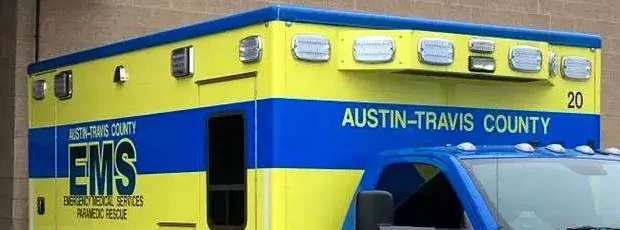EMS chief reports improvement in collections
Thursday, December 15, 2022 by
Jo Clifton Although Austin-Travis County Emergency Medical Services continues to deal with a backlog of unpaid bills for emergency transport, Chief Robert Luckritz says the department has made significant improvements in its billing and collections process. As a result, Luckritz told the City Council Audit & Finance Committee Tuesday he expects to clear the backlog by mid-2023.
According to a chart Luckritz showed the committee, EMS had a billing backlog for 19,000 transports in August. That number has been reduced to 15,000 and should be eliminated next year.
One reason for Luckritz’s optimism is work done by two consultants, one of which created an internal dashboard on collections that is distributed to staff on a daily basis. Additionally, Luckritz said EMS is adding nine new staff members in the collections division. The majority of those new hires will be coming on board in the next few weeks. The new employees will represent a 50 percent increase in staff dedicated to collecting EMS bills, he noted.
He added that in every month since May of this year, collections have exceeded the amount collected for the corresponding month in 2021.
EMS receives money from insurance payments as well as from the state of Texas under what is called charity care. Earlier this year, Luckritz told the committee, Austin-Travis County EMS had submitted $15 million in claims to the state. At that time, he anticipated that the local emergency services provider would receive $5 million from the state.
However, he reported this week that ATCEMS received only $4.6 million.
He also explained that available statewide funding for charity care dropped from $167 million last year to $84 million this year. Luckritz said some cities received significantly more and others received significantly less than Austin, but the ATCEMS share of the state money increased from 4.5 percent to 8 percent, while MedStar, which serves Fort Worth, received only 3 percent of its claims. “So, we are very happy with the share of the claims that we received and we believe it’s where we should be,” he said.
Mayor Pro Tem Alison Alter, who chairs the committee and has been instrumental in pushing for better collections and more funding for EMS, asked Luckritz why the state reduced its funding. He said he did not know why the overall funding was reduced, but noted that the money comes from the federal government and is distributed for other health care services as well.
He learned from the Health and Human Services Commission that “in the coming years there’s going to be a complete look at how those dollars are distributed to make them more equitable from the state’s perspective.” He added that Austin might also be able to get more dollars for EMS from other federal sources. Alter said the city needs to alert its legislative delegation to pay attention to the question of how the federal money is allocated.

This city graph shows how the backlog has dropped from August 2022.
The Austin Monitor’s work is made possible by donations from the community. Though our reporting covers donors from time to time, we are careful to keep business and editorial efforts separate while maintaining transparency. A complete list of donors is available here, and our code of ethics is explained here.
You're a community leader
And we’re honored you look to us for serious, in-depth news. You know a strong community needs local and dedicated watchdog reporting. We’re here for you and that won’t change. Now will you take the powerful next step and support our nonprofit news organization?










